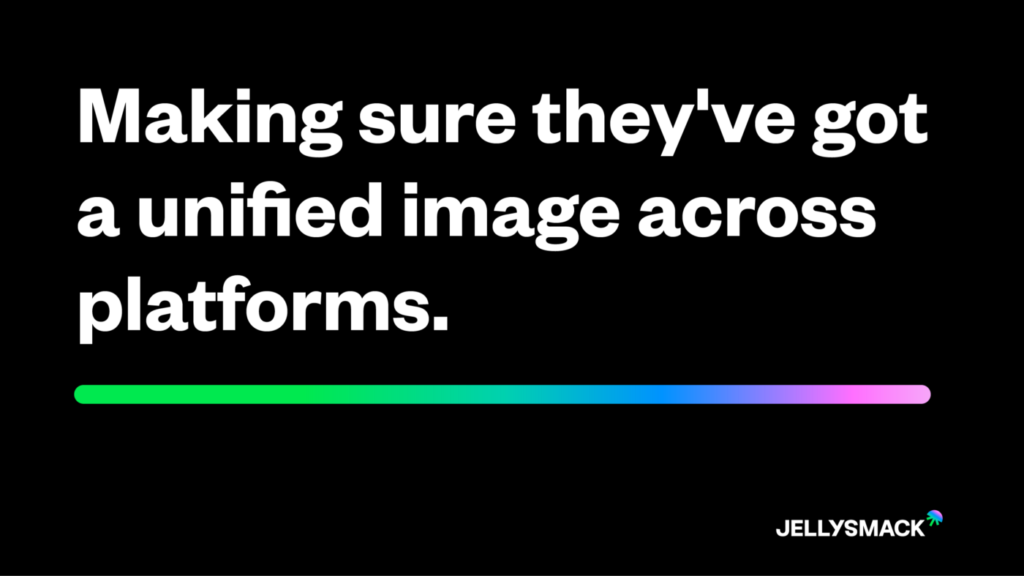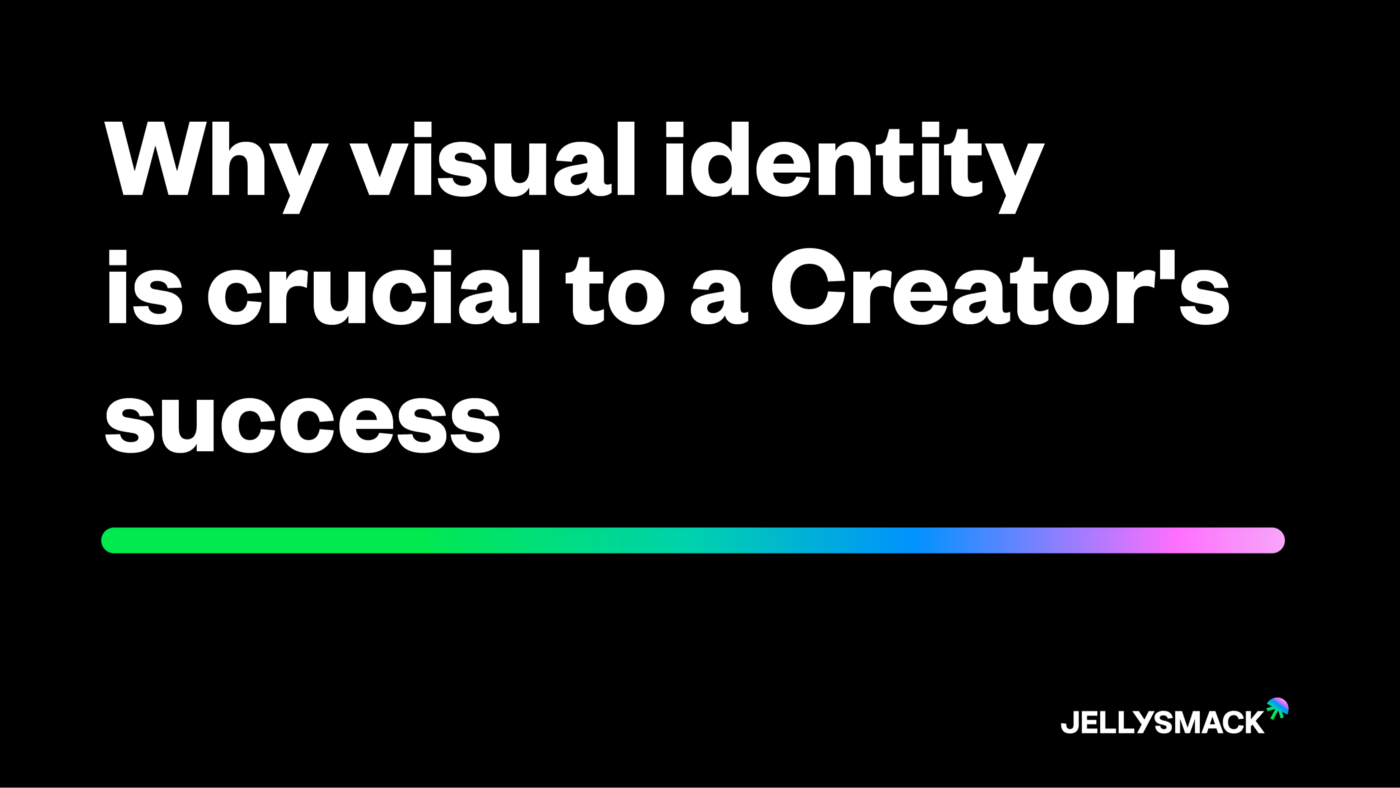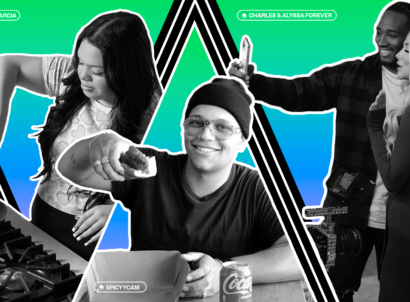Creating a visual identity is essential to any digital company worth its salt. In the sea of content that is the internet, the most eye-catching, aesthetically fine-tuned content has the best chance of going on to survive and thrive.
At Jellysmack, we have prioritized graphic design for our creator partners since day one.
We sat down with Jellysmack’s Head of Design, Hugo Raulo, who joined the company in 2018 as a graphic designer. At that time, he was one of three people on the fledgling design team.
“Social media is a visual medium,” he says. “That much is clear.”
Hugo gives the example of Instagram: “Think about the pages you subscribe to. You subscribe because you appreciate the look, the point of view.”
And, in the digital world, looks are anything but superficial. They’re a conduit, a mode of communication. Visual design is the primary avenue of drawing the audience in and hopefully, turning them into fans.
At the beginning, Hugo spent his days poring over typefaces, analyzing color swatches, and creating vibes for each channel of our creator partners. As he moved up the ranks, he became somewhat more hands-off. About six months into his tenure at Jellysmack, he hired his first recruit, Anaïs Ouattara.
When asked who else might chime in on the topic of visual identity, Hugo called Ouattara over immediately. The two of them still collaborate daily.
“We work together across channels,” says Anaïs. “I step in for him when he’s out of office. It’s a team effort.”

The strategy
Today, Jellysmack’s team of visual artists and graphic designers has grown into a small army. As the list of creators continues to grow, the team has scaled in tandem.
Hugo now oversees over a team of 20 and counting.
But what exactly do they do? What goes into building the graphic identity of a Jellysmack creator partner?
The process starts with the creator themselves, of course.
Sometimes, they come in with a visual identity that’s already established. In some cases, they have several.
“One of the first things we do is make sure they’ve got a unified image across platforms,” says Anaïs.
Professional design is all about coherence, building familiarity, and instant recognition.
“There are so many creators out there. Fans need to recognize their favorites instantly without having to ask themselves if it’s a copycat with a similar name,” adds Anaïs.
The why
Underpinning the entire visual identity is the raison d’être—the why.
“We have to think about what the creator wants to communicate,” says Hugo.
Storytelling—a marketing technique for making the message relatable and authentic—is key to standing out. The team leverages design as an aide, assisting the creator in telling the story and connecting audiences to who the creator is and what they’re about on a personal level. The story needs to connect with the viewer before they even commit to watching the video.
The vibe
Next comes vibe.
Does the creator want their channel to feel chill, spooky, friendly, minimalist? Whatever it might be, the design team then translates that into visual imagery: color scheme, typography, motion graphics—the whole nine yards.
It’s all about delivering a premium product. Some Jellysmack creator partners may have started out in their parents’ basements, but their channels are now bonafide businesses and sources of revenue. So, they’ve got to look streamlined and professional.
“Each creator has a brand…is a brand, in fact,” says Anaïs.
Brand design is all about consistency, high-quality craftsmanship, and of course, advertising. Even ads need designers.

The daily
The team sifts through briefs on new and existing creator partners from Jellysmack’s Partnerships Managers every day. The sheer volume of requests inevitably means that the team “produces a huge amount.” But, Hugo insists, “We still make sure it’s quality over quantity.”
Within the first few months, Hugo’s responsibilities quickly shifted from creation to consulting. Consequently, he took on a more managerial role. “I would go through and approve everything, brief by brief.”
These days, with a team of more than 20 direct reports, That’s just not feasible anymore. Part of his work has been delegated to Anaïs, with whom he works “around 80% of the time,” something he says he’d be “remiss” not to mention. The idea was to help her, but also other designers, to get the leadership experience, independence, and self-confidence they need.
Hugo also works very closely with Paula Alvarez, Jellysmack’s Head of Motion. Together, they lead the graphic and motion teams—helping each other grow by managing and delegating tasks in order to get things done.
Delegating has given them the opportunity to be all-around supervisors who oversee the entire process from start to finish: Creator brief, graphic identity development, and aligning with the video editors who work with the graphics. Along with their teams, they have built up a library of MOGRTs (motion graphic templates) at the editors’ disposal.
The artistic direction established for each creator is definitive in a sense, but it’s never set in stone.
“Even when it’s done, it’s not done,” Hugo jokes. “There’s always reevaluating, troubleshooting, and problem-solving to be done. If we see that a process isn’t working as it should, I’m responsible for coming up with new ideas and testing them out.”
He cites his motto: “Where there’s a problem, there’s always a solution.”
Meanwhile, Anaïs is in the trenches of creation, pumping out new designs for the newest Jellysmack Original channels. Working on in-house channels affords her free reign to create designs from scratch. It also provides the privilege of directly collaborating with the post-production team working on the videos, something that’s not typically possible with creator partner visuals.
“I get a brief with visual references, detailing everything from the atmosphere of the show to how the set pieces look,” she says. Thus far, Anaïs is 10 for 10 in delivering winning proposals. That’s to say, she always hits the nail on the head from the get-go.
The future
If current trends continue, Jellysmack will keep adding new creators to its roster and new graphic designers to its ranks. The social media business is booming, and there’s no reason to think it’ll slow down in the coming years.
“That’s one of the things I love about it,” says Hugo. “It’s impossible to become complacent in the ever-changing world of social media. That’s one of the reasons it’s so exciting.”
Social networks have even found their way into Hugo’s personal story. “I remember being on MySpace, Messenger, and blogs in the early 2000s,” he says with a laugh. “I just loved the look and feel of it all. That was honestly what made me look into graphic design programs in the first place.” Hugo’s story is testament to the prevalence of social media starting with Millennials onward.
While we fancy ourselves more enlightened today with the more refined and feature-laden platforms like Facebook, Instagram, and Snapchat, the social networks that we use every day are always evolving.
“One of our values at Jellysmack is agility,” quips Hugo, “and boy are we agile!”
Between creating concepts, updating existing designs, and finding a balance between creator demands and their design sensibilities, the design team is almost like contortionists.
Anaïs agrees. “The key is being able to bring the design to life, adapt, and of course have fun!”
This article was originally published on Jellysmack’s Medium blog in October 2021.





